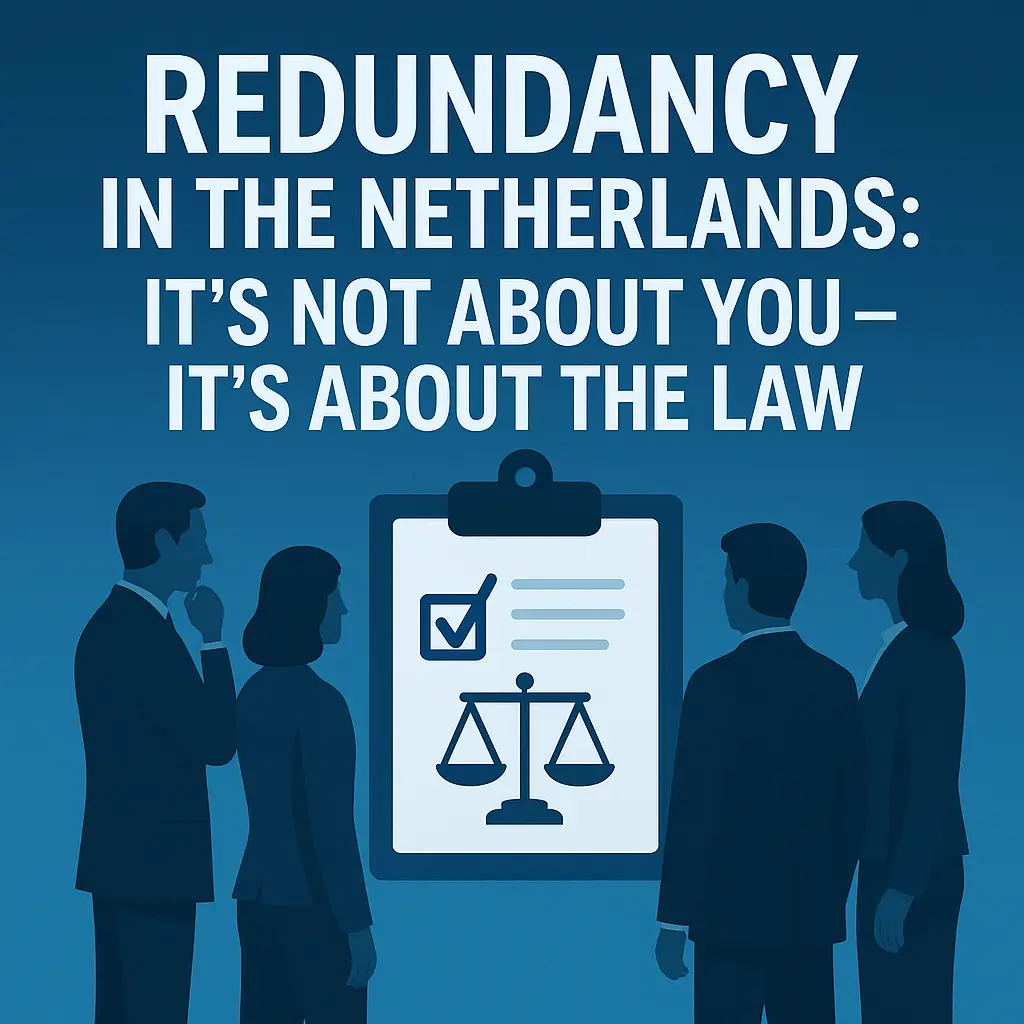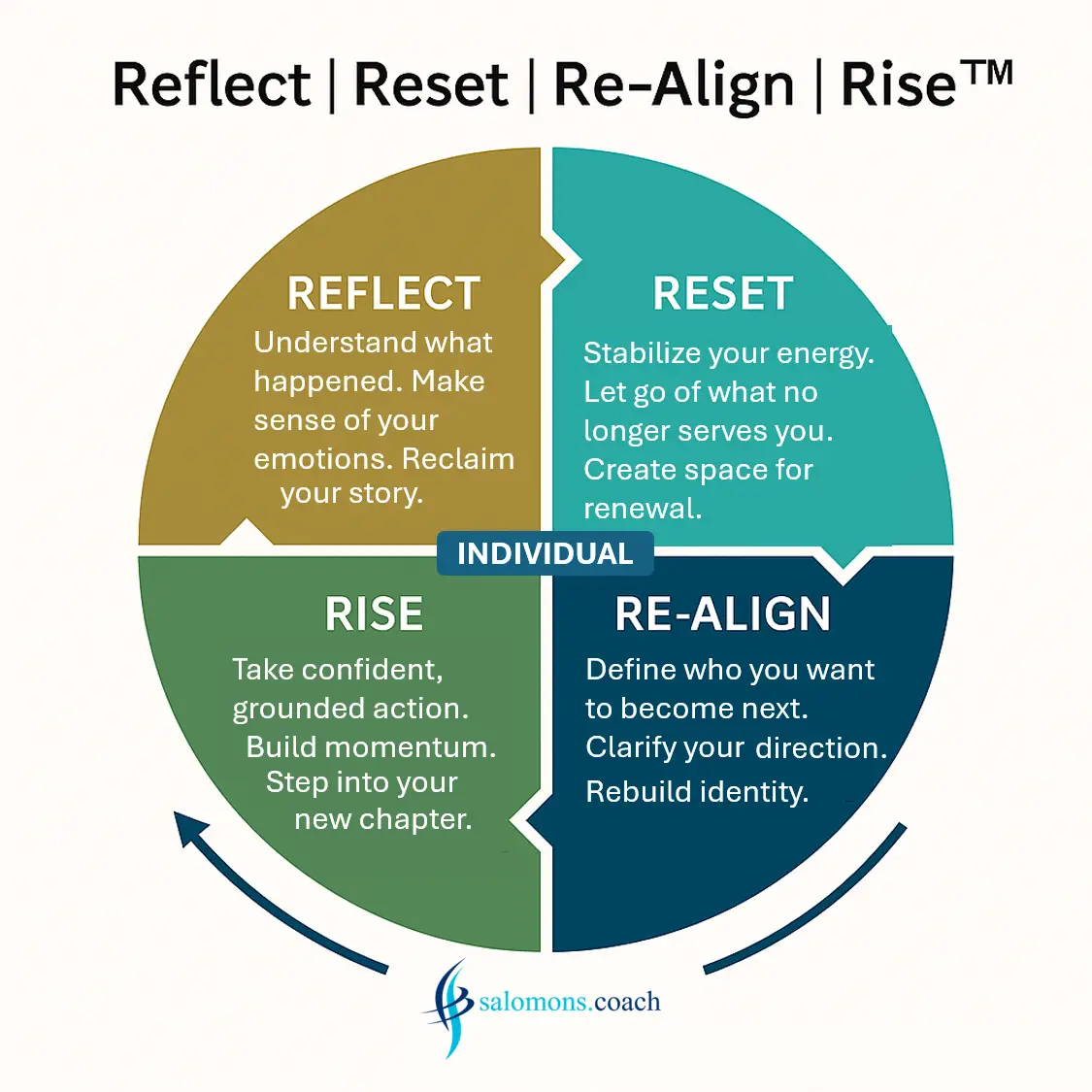Redundancy in the Netherlands: What Employees Need to Know (and Why the Process Is Not About You)

In this post I summarize the laws, rules & regulations in the Netherlands on employers making employees redundant. I write from the perspective of the employee, to provide clarity and some level of support. However, you should also make sure you inform yourself on the formal content (and at the formal places where you can find this) to ensure you also take in the tiny details that sometimes matter a lot! This is not a legal guideline whatsoever!
I work with people being made redundant regularly, so I have obtained experience on the mental process and learned that clarity on the Dutch regulations is really needed.
I also have been a manger and executive, and had to make people redundant, it still hurts…
I have never been made redundant myself, so sharing pain is only indirectly.
Redundancy is one of the most emotionally disruptive moments in a career.
Not because it says anything about your value — but because it hits your identity, your stability, and the story you’ve built over years.
In my coaching work, I often hear people say:
- “Why me?”
- “Did I do something wrong?”
- “Is this personal?”
In 90% of cases, the answer is no.
Redundancy in the Netherlands is driven by law, structure, and organizational necessity, not individual performance.
And yet… the emotional impact is real.
To help employees understand what is actually happening — both legally and practically — here is a clear, supportive overview of how redundancy works under Dutch law, what your rights are, and what timeframes you should be aware of.
In Dutch labor law, redundancy must be grounded in objective, structural reasons, such as:
- Reorganization
- Cost reduction
- Business closure
- Automation
- Loss of contracts
- Relocation of activities
This is crucial:
You cannot be made redundant simply because your employer no longer likes you or prefers someone else.
The law protects you from that.
2. Two Legal Routes for Ending Employment
When redundancy is proposed, there are only two legal paths:
A. UWV Procedure (most common)
For dismissals due to economic reasons, your employer must request permission from UWV.
UWV checks whether:
- the reason for redundancy is valid
- the correct selection process (afspiegelingsbeginsel) has been applied
- redeployment has been explored
- procedures have been followed correctly
If the employer cannot justify the case, the dismissal will be rejected.
B. Settlement Agreement (VSO)
This is a mutual agreement to end the contract.
If worded correctly, it preserves your right to unemployment benefits (WW).
A VSO always gives the employee:
- 14 days reflection period
- room for negotiation (last working day, compensation, outplacement support, communication, etc.)
3. Your Protections During Redundancy
A. The Reflection Principle (Afspiegelingsbeginsel)
When jobs disappear, employers must select employees fairly across age groups.
They cannot “pick and choose” based on preference.
This prevents discrimination and protects diversity in the workforce.
B. Dismissal Bans (Opzegverboden)
You cannot be dismissed if you are:
- pregnant or on maternity leave
- in your first 2 years of illness
- a member of the Works Council
- or covered by other dismissal bans
If a dismissal ban applies, redundancy is normally not allowed.
4. Your Right to Internal Reassignment
Before an employer can dismiss you, they must investigate whether:
- suitable roles are available internally
- you could be retrained for another role
- temporary or upcoming vacancies might fit
- your skills allow placement elsewhere in the company
Important:
There is no 6-month rule in the law, but reassignment must be explored within the reasonable timeframe of the notice period.
In practice, this means:
If a job exists that you can reasonably do (now or after short training), you cannot be dismissed.
5. Transition Payment: Your Legal Compensation
When your employer ends your contract, you are usually entitled to a transition payment (transitievergoeding).
This is a statutory payment based on:
- monthly salary
- years of service
It is your legal right unless:
- you resign yourself
- there is severe misconduct
- other exemptions apply
In a VSO, this amount is often a starting point for negotiation.
6. Understanding Your WW (Unemployment Benefit)
You are entitled to WW if:
- you did not resign voluntarily
- you worked enough weeks (26 out of the last 36)
- you are able and willing to work
- the VSO states that the employer initiated the termination
Apply for WW:
No later than 1 week after your last working day.
WW starts after your legal notice period ends — even if your employer pays you earlier.
7. Important Legal Timeframes
Here are the timeframes employees often overlook:
VSO withdrawal period
You may cancel the agreement within 14 days without giving any reason.
Notice period (unless agreed otherwise):
- 1 month: employment 0–5 years
- 2 months: 5–10 years
- 3 months: 10–15 years
- 4 months: 15+ years
UWV processing time:
Typically 4–6 weeks, depending on the complexity.
WW benefit start date:
Day after your contract ends (after notice period).
8. What You Should Do When Facing Redundancy
Here is a practical checklist:
✔ Ask for the reason in writing
✔ Request the VSO to review at your own pace
✔ Get independent advice (legal insurance, union, coach)
✔ Check the notice period and last paid day
✔ Verify your transition compensation amount
✔ Clarify internal reassignment possibilities
✔ Prepare your WW application on time
✔ Consider coaching or outplacement support
This process is emotionally heavy — but legally, you are more protected than most people realize.
9. You Don’t Have to Navigate This Alone
Redundancy is rarely about performance.
It is about timing, organizational logic, and structural decisions outside your control.
But how you move forward after redundancy — emotionally, professionally, and personally — shapes your next chapter.
If you want clarity, perspective, and support in your transition, my 4R Model (Reflect–Reset–Re-Align–Rise™) is designed for exactly this journey.
Because redundancy isn’t an ending.
It’s the beginning of a new identity.
Check my blog for more on my insights on how to rise from being made redundant!




